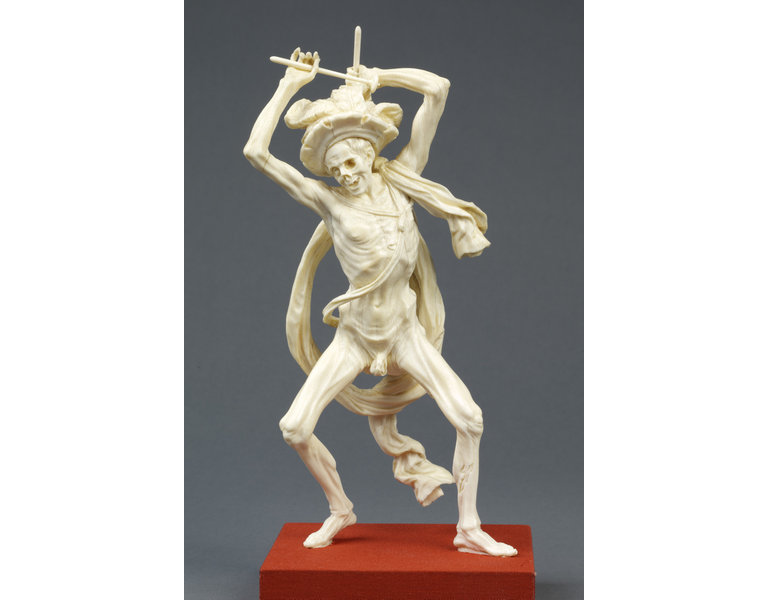Death as a drummer

Germany (Northern, made) ca. 1670-1680 (made)
Artist/Maker: Henne, Joachim, born 1630 (probably, artist)
Materials and Techniques:Carved elephant ivory
This exceptionally fine example of a freestanding ivory statuette has been convincingly attributed to the German artist Joachim Henne on the basis of its realism, drapery style, and technique of carving. Comparatively little is known of Henne’s life, including when and where he was born or died, or where he was trained. He worked in different centres in Germany and Denmark, specializing in small portrait reliefs and busts in ivory, though he also executed figure groups, and reliefs depicting mythological scenes. Although possibly from Jutland or North Germany, he may have trained in South Germany, in Ulm or Augsburg, and was active in Hamburg (1663-5), Gottorf (1665-7), and Copenhagen at the court of King Frederick III, and then under that of Frederick’s successor, King Christian V, from 1667 until 1691. He is thought to have travelled to Rome in 1691-2. From 1702-7 he is recorded as court miniature painter at the Brandenburg Court in Berlin, and he is also known to have worked in wood. This figure might date from c.1673, when Henne was in Copenhagen, although the dating is problematic, and it could be somewhat later. It is in a tradition which flourished particularly strongly in Germany from medieval times onwards, and especially in the 16th and 17th centuries. Figures of Death as mementi mori tied in with suggestions of the Fall of Man, and the fate of sinners. Henne was most active as a portraitist, although he also carved reliefs of religious and mythological subjects.
© Victoria and Albert Museum, London